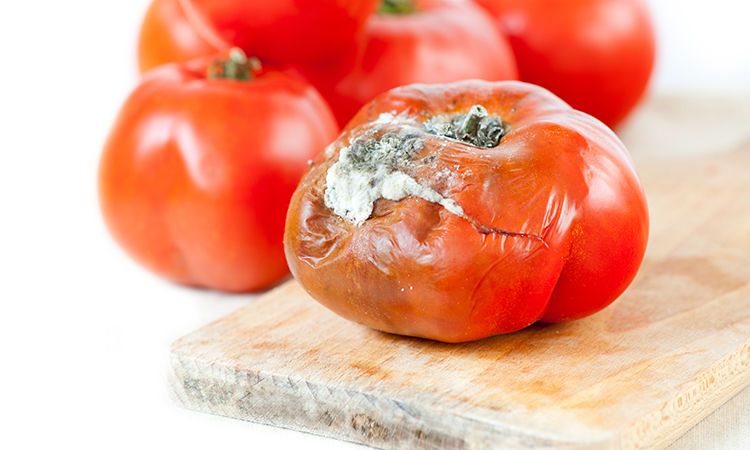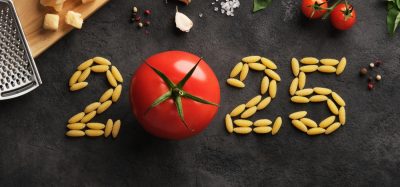Mitigating mycotoxin risk in finished products
- Like
- Digg
- Del
- Tumblr
- VKontakte
- Buffer
- Love This
- Odnoklassniki
- Meneame
- Blogger
- Amazon
- Yahoo Mail
- Gmail
- AOL
- Newsvine
- HackerNews
- Evernote
- MySpace
- Mail.ru
- Viadeo
- Line
- Comments
- Yummly
- SMS
- Viber
- Telegram
- Subscribe
- Skype
- Facebook Messenger
- Kakao
- LiveJournal
- Yammer
- Edgar
- Fintel
- Mix
- Instapaper
- Copy Link
Posted: 17 May 2021 | Jaclyn Bowen | No comments yet
Jaclyn Bowen explains why mycotoxin mitigation is just as crucial as any other element of food safety management, and offers some helpful advice on how to deal with mycotoxin contamination.


Have you got a mycotoxin mitigation strategy in place?
Food safety and quality assurance professionals who work in pre-farm gate food safety or who source raw agricultural commodities probably consider themselves rather well-versed when it comes to the product quality and safety risks posed by mycotoxins. Mycotoxins are produced by just over 360 species of mould, mostly belonging to the type of Aspergillus flavus, Fusarium and Penicillium variety.
What are mycotoxins and why are they dangerous?
Mycotoxins are a danger to health for their potential to cause serious disease.1 According to the World Health Organization, “the effects of some foodborne mycotoxins are acute, with symptoms of severe illness appearing quickly after consumption of food products contaminated with mycotoxins. Other mycotoxins occurring in food have been linked to long-term effects on health, including the induction of cancers and immune deficiency.
“Of the several hundred mycotoxins identified so far, about a dozen have gained the most attention due to their severe effects on human health and their occurrences in food.” For example, the aflatoxins produced by Aspergillus species can cause aflatoxicosis, a life-threatening form of acute poisoning with potential to cause liver damage.
Evidence also exists that suggests that aflatoxins are genotoxic and can exert more long-term health effects, such as liver cancer. Ochratoxins – produced by both Penicillium and Aspergillus species – on the other hand, lead to kidney damage and have been implicated as causal agents of kidney cancer in animals, together with adverse effects on foetal development and the immune system. In addition, recent research has tentatively suggested that ochratoxin A may be linked to autism in children.2 The other major fungal genus responsible for mycotoxin production, Fusarium, produces fumonisins, common contaminants of maize linked to esophageal cancer.
The short- and long-term adverse health impacts of mycotoxins warrants increased food safety scrutiny. The challenge of mitigating the risk of mycotoxin formation doesn’t stop at the farm gate. Did you know that nearly 25 percent of the world’s crops are impacted by mycotoxins? These harmful compounds, if unmitigated, can be felt throughout the entire food chain.


Aflatoxins produced by Aspergillus species can cause aflatoxicosis, a life-threatening form of acute poisoning
The Food and Agriculture Organization of the United Nations (FAO) reported that approximately one billion metric tons of food had to be destroyed in 2019 due to mycotoxin contamination.3 Brands formulating products with high-risk ingredients must be cognisant of the pervasiveness and speed in which mycotoxins can form. Here are some tips for adjusting your quality system accordingly…
-
Identify the high-risk ingredients within your formulation
A wide range of commodities can be contaminated with mycotoxins both pre- and post-harvest. Aflatoxins are found in maize and peanuts, as well as in tree nuts and dried fruits. Ochratoxin A is found mainly in cereals, but significant levels of contamination may also occur in wine, coffee, spices and dried fruits.
Other products of concern are beans, roasted coffee and cocoa, malt and beer, bread and bakery products, wines and grape juices, spices, poultry meat and kidneys, pig kidneys and pork sausages.4 Given the growth of the plant-based movement, these product types should also be considered high risk. When was the last time you revisited your HACCP or HARPC programme with mycotoxin contamination in mind? It might be time to re-evaluate.
-
Rethink your ingredient storage area and production processes
Since mould and mould spores are omnipresent in the environment (atmosphere, soil, etc.), it is impossible to completely eliminate mycotoxin contamination. However, robust drying, minimising water content, and reduced humidity can help to control the environment that can support mycotoxins.
Most mycotoxins are relatively heat-stable within the range of conventional food processing temperatures (80–121°C), so little or no destruction occurs under normal cooking conditions such as boiling and frying, or even following pasteurisation. In fact, during the production of cheese and other types of milk products, the amount of aflatoxin M1 may increase (depending on the type of cheese).4 Evaluate temperature and humidity as part of your environmental monitoring programme.
-
Make necessary adjustments to your supplier assurance programme
A supplier assurance programme is a process intended to ensure that a supplier reliably supplies goods or services that satisfy a customer’s need. This process should be collaborative to ensure the supplier’s product offering meets the agreed-upon requirements with minimum inspection or modification. If you identify a high-risk ingredient within your formulation, consider reaching out to the supplier on what, if anything, they are doing to control for mycotoxin contamination. Don’t be afraid to ask about storage conditions, establishing mandatory transportation conditions, and even building testing into your contract.
-
Use testing to confirm the absence of mycotoxin
When it comes to food safety and quality, the total quality axiom of “trust but verify” holds true. When evaluating incoming ingredients or even finished products, mycotoxins are no exception. Whether you choose to require your incoming Certificates of Analysis from suppliers to test for mycotoxins or to do your own routine sampling and testing for mycotoxins on incoming ingredients or finished products, testing can help confirm ongoing compliance and safety.
Remember, always use an ISO-17025 accredited laboratory with mycotoxins within their accreditation scope and single digit parts per billion or even parts per trillion when it comes to levels of detection and levels of quantification.
Conducting a mycotoxin risk-analysis of your suppliers, ingredients, and formulation, and where needed, incorporating a HACCP or HARPC point to ensure ongoing compliance and safety, can reduce brand and public health risk.
References
2 Mezzelani A, Raggi ME, Marabotti A, Milanesi L. (2016) Ochratoxin A as possible factor triggering autism and its male prevalence via epigenetic mechanism. Nutritional Neuroscience, 19 (1): 43-46. DOI 10.1179/1476830515Z.000000000186
3 http://www.fao.org/3/ca6030en/ca6030en.pdf
4 https://www.ncbi.nlm.nih.gov/pmc/articles/PMC3153222/
About the author
Jaclyn Bowen MPH, MS is the Executive Director of Clean Label Project and a food safety and quality systems engineer. Prior to coming to Clean Label Project, she spent 15 years at the World Health Organization Collaborating Centre, NSF International, working on the creation and enforcement of food safety and water quality standards and compliance systems.
Related topics
Contaminants, Food Safety, Mycotoxins, Processing, Regulation & Legislation, Research & development, Supply chain
Related organisations
Food and Agricultural Organization of the United Nations (FAO), World Health Organization (WHO)









